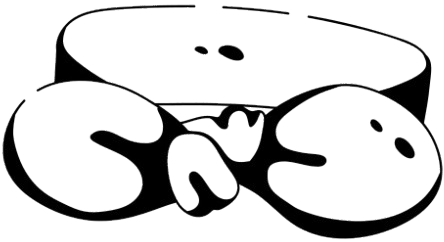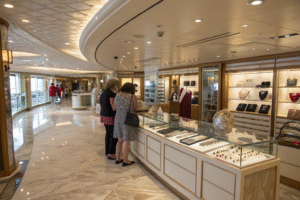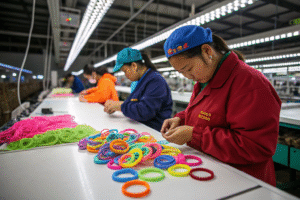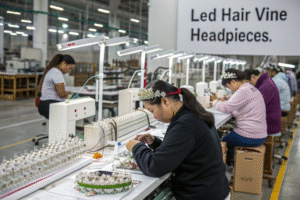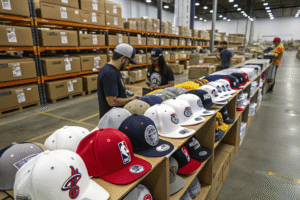Sourcing trendy claw clips in large quantities can be exciting—until you’re hit with unexpected tariff penalties. Import duties, customs fines, or incorrect declarations can quickly eat into your margins. Whether you're an Amazon seller, fashion brand, or supermarket chain, minimizing tariff exposure is just as important as securing a competitive price.
The smartest way to source claw clips in bulk without tariff penalties is to partner with experienced Chinese suppliers who offer DDP options, use correct HS codes, and know how to navigate trade agreements. With the right approach, you can enjoy smooth customs clearance, on-time delivery, and fully optimized landed costs.
In this article, I’ll show you how HairAcc supports clients just like you—buyers sourcing thousands of trendy hair claw clips at once—without running into costly duty problems or shipping delays.
What Are the Common Tariff Traps When Importing Claw Clips?
Claw clips may seem simple, but they sit at the crossroads of multiple tariff risk factors: material misclassification, vague product descriptions, and wrong shipping modes. Many importers face sudden charges because they didn’t pre-classify goods properly.
Common tariff issues arise from using incorrect HS codes, undervaluing goods, or misunderstanding material-based tariff differences. Small mistakes here can lead to big fines or even product seizures.

Why Does HS Code Selection Matter?
Each type of accessory has a designated HS code, or Harmonized System code, which determines its duty rate. For claw clips, the correct code usually depends on the main material—plastic, metal, or fabric-covered. Misclassifying a plastic claw clip as a "jewelry item" instead of "plastic hair accessory" could result in a 17% tariff rather than 2.5%.
Some suppliers mistakenly generalize all items as generic fashion accessories, which can trigger red flags in customs. At HairAcc, we pre-classify each product type and share documentation templates so your shipments are duty-safe.
How Do Product Descriptions Affect Tariff Risk?
Vague or misleading invoice descriptions like “hair tools” or “decorative item” often lead to customs clearance delays. Customs agents may suspect under-reporting or reclassify the item themselves. Accurate, customs-compliant product descriptions are essential.
At HairAcc, we use standardized, clear wording for each batch—like “plastic claw hair clip, fashion accessory, non-electronic”—which aligns with both U.S. CBP and EU TARIC guidelines. This minimizes inspection risk and speeds up the release process.
How Can You Use DDP Shipping to Avoid Surprise Duties?
If you want the easiest way to avoid tariff headaches, choose DDP (Delivered Duty Paid). Under this shipping term, the supplier handles all duties, paperwork, and customs clearance—delivering goods straight to your warehouse.
By choosing DDP shipping, you delegate tariff payment responsibility to your supplier, eliminating hidden fees and avoiding import complexity.

What Is the Benefit of Working With a DDP-Capable Factory?
Many Chinese factories only offer FOB or EXW terms, which leave customs clearance to the buyer. But at HairAcc, we offer full DDP shipping services to major countries, including the U.S., UK, Germany, and Russia. Our logistics team handles customs paperwork, duties, and last-mile delivery—all bundled in one quote.
This saves our clients hours of back-and-forth with freight forwarders or customs brokers. You pay a landed price and get tracking from our door to yours.
Are There Any Risks With DDP Shipping?
DDP is a powerful option, but only if your supplier is truly experienced. Some factories outsource this to agents with no customs knowledge, risking mis-declaration. At HairAcc, our freight team works with certified AEO partners and provides real-time tracking, so you stay informed. We also clearly label cartons, attach invoices in triplicate, and offer optional cargo insurance for peace of mind.
How Do You Source From Zero-Tariff Countries Legally?
Not every claw clip shipment has to originate from a high-duty region. Smart buyers explore bonded zones, partner factories in ASEAN countries, or utilize transshipment through zero-duty markets.
Using bonded warehouses or trade-friendly hubs allows you to re-export claw clips from tariff-exempt countries legally, reducing import duty exposure.

What Role Do Free Trade Agreements Play?
The U.S. has trade agreements with certain countries (like Vietnam, Singapore, and Mexico) that offer reduced or zero tariffs on many accessories. If you can route your goods through these hubs and provide a certificate of origin, you may avoid duties entirely.
At HairAcc, we work with bonded zones in Shenzhen and Ningbo. We can ship claw clips to your consolidation warehouse in Vietnam or Malaysia and re-export to the U.S. with compliant paperwork. This method is especially useful for large-volume buyers or those with multi-country sourcing plans.
How Do You Ensure Legal Compliance When Transshipping?
The process must follow strict documentation rules. Each repackaged box must be relabeled with accurate origin info, and you’ll need a Form A or EUR.1 certificate depending on the destination. We guide clients through each step, including repacking photos, invoice revisions, and container seals.
For buyers in Europe, leveraging Generalized System of Preferences (GSP) benefits can also cut import costs when sourcing from Asia.
How Can Packaging and Labeling Reduce Tariff Exposure?
It may sound minor, but proper labeling can be the difference between a smooth customs release or a costly reclassification. Some countries fine shipments missing country-of-origin tags or proper tariff declarations.
Top suppliers label claw clips, inner cartons, and master cartons clearly with HS codes, COO tags, and barcodes to comply with import rules.

What Packaging Elements Are Required for Customs?
In the U.S., for example, every outer box must show “Made in China” and match the information on the commercial invoice. If the product packaging has a logo or model number, it must also appear on the paperwork.
We use thermal printing systems to label each inner pack with the SKU, barcode, and carton weight. Our invoices include HS codes, material breakdowns, and origin tags—preventing U.S. CBP delays.
How Does Proper Labeling Help Avoid Tariff Misclassification?
Clear product and shipping labels reduce guesswork by customs officers. When everything matches—the product, the invoice, and the barcode—the chance of random checks drops. If we’re shipping to Europe, we also use TARIC-compatible codes and support translations for French, German, and Spanish declarations.
Some clients also add QR codes linked to digital manuals, which makes retail integration easier while helping pass customs tech audits in countries like Germany or Japan.
Conclusion
You don’t have to compromise between trendy hair clips and tariff-safe sourcing. The smartest buyers today work with factories who offer full customs support, DDP shipping, and tariff-aware product classification.
At HairAcc, we’ve helped hundreds of global buyers move claw clips across borders without penalty. From HS code compliance and bonded re-export, to legal labeling and smart logistics—we make bulk sourcing worry-free.
If you're planning your next claw clip collection, let us quote with tariff-included pricing. You’ll see why HairAcc is trusted not just for style, but also for smooth delivery.
